"A German airman is boarding at a house in England. The landlady tells him about her daughter's death; she was killed in an air raid on her seventeenth birthday. As he hears the story, he remembers that day and that he was dropping bombs on the area. When he sees her portrait, he runs from the house and the landlady's son Rudolph runs after him. He chases him across the clifftops and the German sees a vision of the daughter. He tries to embrace her but stumbles and falls off the cliff. Rudolph also sees his sister, they laugh, embrace and he throws stones at the German who is clinging to a tree root. Rudolph's vision disappears and he runs down to rescue the German but he is already dead" (BFI online).
"Mr Terence L. Greenridge writes to tell me that the film “Afterwards”, for which he and his wife Nora [Pfeil] Greenridge, are jointly responsible, has been taken back for the sake of certain additions, previous for general release to amateur societies. Mr Terence Greenridge is better known in the amateur film movement as the first filmmaker in Oxford University, and as author of the recently published “Degenerate Oxford!” For some time he has been a leading light of the London A.C.A. Mr Terence Greenridge did the secondary jobs of “Afterwards”, such as scenarising, choosing locations, and working out camera angles. This film, which had a particularly successful premiere at the London A.C.A.’s public show, is not merely the London A.C.A.’s most ambitious production for 1930, but is also something rather new in cinematography, whether professional or amateur. It has something of that imaginative audacity for which I have already pleaded, and it is, very largely, the work of a woman."
"Telling Situations - In too many cases a film has to attempt to justify a conventional plot. In this case the plot makes the film. Nora Greenridge, who wrote the story, possesses a natural instinct for a telling situation: even when, as in this case, the theme came to her in a dream. In “Afterwards” there is nothing of the sentimental, conventional world of nine films out of ten, where the hero is never allowed to die unless it is obvious that life has not more to offer him. The good looking hero of “Afterwards” dies at the prime of life, full of vitality, and in “Afterwards” the dramatic conflict is between man’s muddle-headed kindliness and the precise retribution of the supernatural world: so precise that, on occasion, it can become cruelty. The film is not calculated to induce placid happiness in an audience, but rather to challenge them to think about the deeper problems of life. Treatment has been subordinated to theme. There is no stunting in this film. Camera-angles and backgrounds were selected in so far as they might elucidate the episode which was being pictured, and not for intrinsic excellences that they might posses in themselves. The beauty of the English countryside finds expression in “Afterwards”, but Nora Greenridge has utilised it in a purposeful manner, understanding how grim events become twice as grim, if they happen in beautiful surroundings."
“Happy Ever After - Nora Greenridge not only wrote the story and directed its production, but played a part, to quote one of the critics, “with sylph-like grace”. Mrs Greenridge, or Nora Pfeil as she used to be, is an attractive blonde and has played several leading roles in London A.C.A. productions. She has also won many awards in scenario competitions. She became engaged to Terence Greenridge a quarter of the way through the production, and halfway through the production their marriage took place. Now they have a house called “Afterwards”—a happy and true modern version of the age-old fairy-tale ending" (M.A.L.B. 1931, 9).
"One of the films being shown [as part of the All-English Amateur Film Week] has been referred to as the most ambitious production of 1930. Produced by Terence Greenridge, better known as an author, directed by Miss Nora Pfeil, who has since become Mrs Greenridge, “Afterwards” is certainly a film none should miss. Plots should not be given away in advance, so let it be said that a German Professor came to England in 1928 on a geological holiday. He settled down with an English family, the daughter of which had been killed in an air-raid over London ten years previously, and the son rendered neurotic. The family generally “took to” the German, who was a sociable enough fellow. They forgot the war, but as the tenth anniversary drew near—It is a film well worth seeing" (Anon 1931, 9).
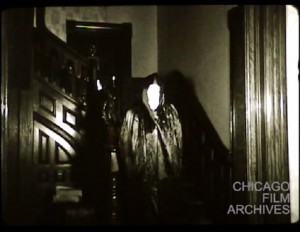
"A short mystery film from members of the Amateur Cinema League. A group of relatives gather in a haunted house for the reading of a will. Someone among them knows a secret about the house, and uses stories about the Black Widow to try and scare everyone away. In the end, their identity is revealed and all the secrets come to light. Title cards narrate the dialogue." Chicago Film Archives.
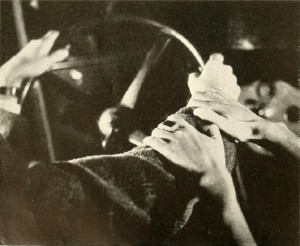
"The producers of 'Chronicle' must be commended for a novel treatment. They employed the hands only to show the life of a boy from his third birthday until maturity. Into this novel treatment they spun a story of the boy's downfall until he is found guilty of murder and is incarcerated. All of it was interior and was well photographed." American Cinematographer, Jan. 1936, 40.
"'Cup of Fear' produced and entered by the Stamford (Connecticut) Cinema Club and photographed by John Harms, is a well directed, acted and photographed 'whodunit' in which one of several office employees who have been passed up in a company promotion, murders the hapless executive promoted to the vice-presidency. A cup of wine, antidote for poison supposedly fed the murderer at a dinner, proves his undoing. All shots are interiors and save for one or two, are excellently lighted and photographed. Many professional touches, such as dolly shots, dramatic camera angles, and story-telling closeups highlight the picture. Harms used a 16 mm. Bolex camera and Kodak Super-X panchromatic film." American Cinematographer, Apr. 1950, 146.
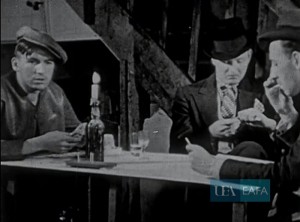
"A tale of greed, murder and passion set in a French provincial town in the 1930s. The focus is a tawdry basement drinking and gambling club. Rejecting the violent advances of a man who returns to her rooms with her, a local girl kills him and is assisted in the disposal of the corpse by her regular beau - a cynical, louche cardsharp. A vigilant detective brings her to court for murder. Witnesses take the chance to blacken her name by giving false testimonies but she is acquitted. Her freedom is soured by her lover's rejection of her and she returns to the streets" East Anglian Film Archive.
"Electra, 400 ft., 16mm., produced by Clyde Hammond, is a picturization of that Greek drama. Its most novel quality is the evidence of an intelligent search for the best motion picture treatment to present an accurate film version of the story. A series of tableau like sequences were finally used with much better results than if the plot had been adapted and scenarized in the customary manner. Certainly this film version is much truer to the original than would otherwise have been possible. Not being able to erect the complicated sets that would seem necessary, Mr. Hammond used flat gray walls, producing the suggestion of ancient Greek palaces and dwellings with "props," costumes and occasional wall ornamentation. The photographic quality is uniformly good throughout and, one sequence has very good double exposures." Movie Makers, Dec. 1930, 787-788.
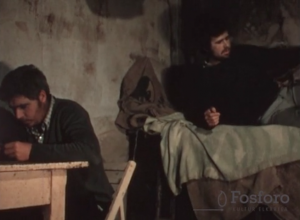
Un hombre vaga por las calles de un pueblo buscando tabaco en botes de basura o en el camino. Al entrar a un bar, un hombre nota que está buscando algo, por lo que lanza tabaco al suelo y cuando el primero se agacha a recogerlo, el otro lo tira al suelo mientras todos en el bar se ríen de él. Al regresar al cuarto en el que vive, otro hombre se encuentra ahí descansando. Los hombres tienen una breve conversación sobre cuándo se irá el otro, mientras que este da una excusa y le pide algo de tabaco al primer hombre. El primero se niega y le dice que el tabaco es muy difícil de conseguir, provocando la ira del segundo, quien decide asesinarlo apuñalándolo por la espalda. Después de enterrar su cuerpo, vuelve al cuarto donde se siente culpable y después de llorar por un rato, decide suicidarse.
A man wanders the streets of a town looking for tobacco in trash cans or the road, he enters a bar and a man notices that he is looking for something, he throws some tobacco on the floor and when the first man tries to reach it, he shoves him to the floor while the rest of the men in the bar laugh at him. When he goes back to the room he lives in, there is another man there resting. They have a small conversation about when the man lying down will leave, he gives an excuse and then asks the other for some tobacco. The first man refuses and tells him it is too hard to get, provoking the anger of the second one who then he chooses to kill him by stabbing him in the back. After burying his body he goes back and feels guilty, after crying for some time, he chooses to kill himself.
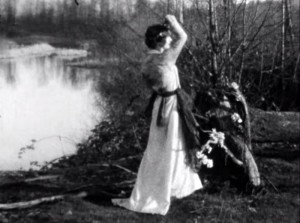
"A parody of William Shakespeare's "Hamlet," produced and directed by James Blue while he was an undergraduate student at the University of Oregon." Knight Library.
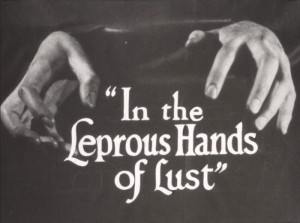
"The story is a burlesque of the anti social activities of a vice ring. The film contains some excellent interior lighting and is remarkably well edited." Movie Makers, April 1931, 224.
"King Bookie: John Cowart set himself a tremendous goal in undertaking the production of this dramatic film, which has to do with bank robbers. But thanks to his zeal, his all around ability in movie making, the sincerity and cooperation of his amateur cast, and the cooperation of local merchants who happily contributed the use of their business establishments for locations, he has turned out a highly creditable production. The picture opens with a girl, unwittingly involved in the robbery, relating to an attorney events of the story which is pictured in retrospect. King Bookie is an underworld character who plots the crime, involves several others, some of whom meet death by his gun when the proceeds are retrieved from one gang member who sought to double-cross King Bookie. Narration, dialogue and musical score are a commendable effort of sound-on-film recording." American Cinematographer, May. 1951, 190.
Total Pages: 4